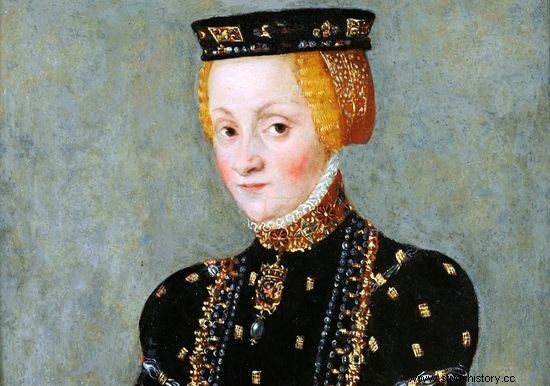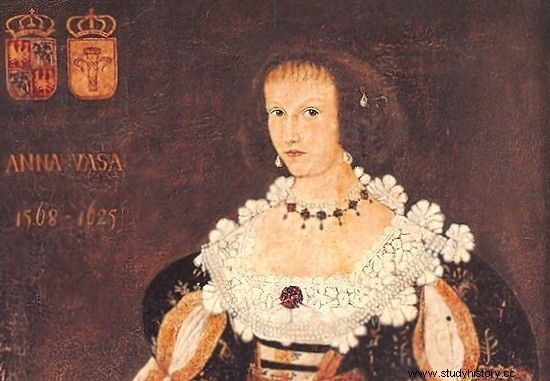Every school textbook teaches that the Commonwealth had an elective king, who simply gave the country a deal. Henryk Walezy became loyal to him Polish nobility, and in France he died at the hands of his own countryman. But ladies and gentlemen! This is not the only similar case in our history. A descendant of Władysław Jagiełło and a representative of a rather young Swedish dynasty at that time - Zygmunt III Waza also tried to escape from Poland.
You probably know the story of Henryk Waleze's escape very well. In the homeland of the king - France - the throne was vacated after the death of his brother Charles IX. Vales, who ruled the Republic of Poland at that time, decided to take the opportunity and try to take over the legacy. During the night of June 18/19, 1574, he secretly escaped from Poland, which he did not like (the ruler did not know the local language, did not understand the customs and he was bored with the harsh climate of the country) to long-awaited France.
He never returned to the Commonwealth, and the Seym had to recognize the throne as deserted and conduct another election. The choice, which was preceded by almost two years of struggle, finally fell on István Báthora, our good old King Stefan.

Henryk Walezy valued the French much more than the Polish throne. It will cost him his life in the end.
Stefan is missing, Poland must have a new master
Although Batory did not rule Poland for too long, many historians consider him one of the best elected rulers. After he had said goodbye to that vale of tears, another election awaited the Republic of Poland.
A year after the death of Stefan Batory, the Swedish prince Zygmunt was elected. This candidacy was supported by the kinship of the young Vasa with the Jagiellons (the widow-queen Anna Jagiellonka was his aunt, and he was born into the world by Katarzyna Jagiellonka, sister of the last king of the dynasty) and the expected alliance with Sweden.
Zygmunt's father was Jan III Waza, king of Sweden. The monarch made great efforts to obtain the Polish crown for his son, wanting to create a Polish-Swedish alliance against Moscow. When the efforts were crowned with success, and the prince left, Jan III ceased to feel joy.
At that time, paternal feelings towards his beloved son came to the fore. In short, the less sociable and politically alienated king felt excruciatingly lonely. After all, his wife was already dead, and his beloved daughter Anna left with Zygmunt.

Zygmunt's mother was the sister of the last male representative of the Jagiellonian dynasty, Katarzyna Jagiellonka. It was a significant asset during the election.
Soon after the election, the Swedish king began to accuse members of his council of taking his son away, ignoring the fact that it was he who had started the efforts. Zygmunt III Waza was also not happy in his new kingdom. Poland was a foreign country for him. Although he spoke his subjects' language, he felt alienated and misunderstood.
From Polish to Swedish soil…
Finally, in August 1589, Jan III Vasa decided to free his son from "cruel slavery" and bring him to Sweden. On August 5 of the same year, Zygmunt, surrounded by the Polish legation of about two thousand people, met his father in the Estonian Rewel.
On the spot, it turned out that both men are aiming for… exactly the same! Zygmunt wanted to leave Poland, and Jan only persuaded him to do so.
In the course of the negotiations, it became obvious that the departure of the Polish king from the country (which in practice was desertion) would severely disturb Polish-Swedish relations and would bring to Poland the specter of another civil war caused by another election. On the other hand, Russia was sharpening its teeth at Livonia.
Interestingly, the members of both the Polish and Swedish delegations who came to Rewel continued their efforts to preserve the existing status quo , recalling that war would be an inevitable result of Sigismund III's return to Sweden.

Young Zygmunt completely did not like his reign in Poland. He missed his native Sweden. He was close to following in Valois's footsteps.
The Polish-Swedish-Moscow conflict was in the air. At one point, the commanders of the Swedish army could not stand it and announced (in somewhat veiled words, but still) a rebellion. No wonder - no one wanted to shed blood because the Polish throne was crushed by the young Vasa in his royal seat and because he missed his daddy.
This article has more than one page. Please select another one below to continue reading.Attention! You are not on the first page of the article. If you want to read from the beginning click here.
After further rounds of negotiations, it was finally decided that Sigismund would remain on the Polish throne. The king could meet his father several times, but in practice they saw each other for the last time in Rewel. The arrangements made at that time tied the ruler even more closely to the Polish throne and dragged him away from the Swedish capital. Sigismund III went there only after his father's death in order to succeed him.
Ah, those nasty Council gentlemen!

But let's get back to the old king. Jan III, leaving Rewel, was aware that he had met his son for the last time. To sweeten my father these bitter moments, Anna Wazówna stayed with him for some time. After all, even she could not contain her father's anger.
For years, King John took revenge on his council for "taking" his son and "destroying" his family happiness. Let us quote the words of Lars Wolke, the author of the biography Jan III Waza, recently published in Poland. Renaissance ruler ":
After his return from Estonia, his domestic and foreign policy activities completely disappeared. [...] And he showed unflagging zeal in only one respect:he did not stop taking revenge on the members of the Council, who, in his opinion, first persuaded him to allow his son to run for the Polish throne in 1587, and two years later they prevented him from returning from Zygmunt to Sweden.
No wonder that after the devastation he had sown, few greeted Zygmunt with open arms when he finally came to collect his paternal crown ...
Miss Anna cheeky
Finally, I will devote two more words to Miss Anna Wazówna, the sister of the Polish king. Two years after she accompanied her father back from Rewel to Stockholm, she also left for Poland. The youngest daughter of Jan III and Katarzyna Jagiellon was, in the opinion of her contemporaries, too resourceful.

Anna Wazówna was characterized by intelligence and resourcefulness, which did not attract her many supporters at her brother's court.
With a careful education and great influence over her brother, she was not welcome in his kingdom. It was even said that she was much more talented than Sigismund III. Raised in zealous Catholicism, in her teens she accepted Luther's confession, which made her life in Poland difficult (for example, she was denied a burial in Wawel, which she was entitled to as a member of the royal family).
In the end, the king's sister settled permanently on the Vistula in 1598 and lived here until her death, becoming a patron of many artists.
Source:
Trivia is the essence of our website. Short materials devoted to interesting anecdotes, surprising details from the past, strange news from the old press. Reading that will take you no more than 3 minutes, based on single sources. This particular material is based on:
- L. E. Wolke, Jan III Waza. Renaissance ruler, Oficyna Wydawnicza Finna, Gdańsk 2011
